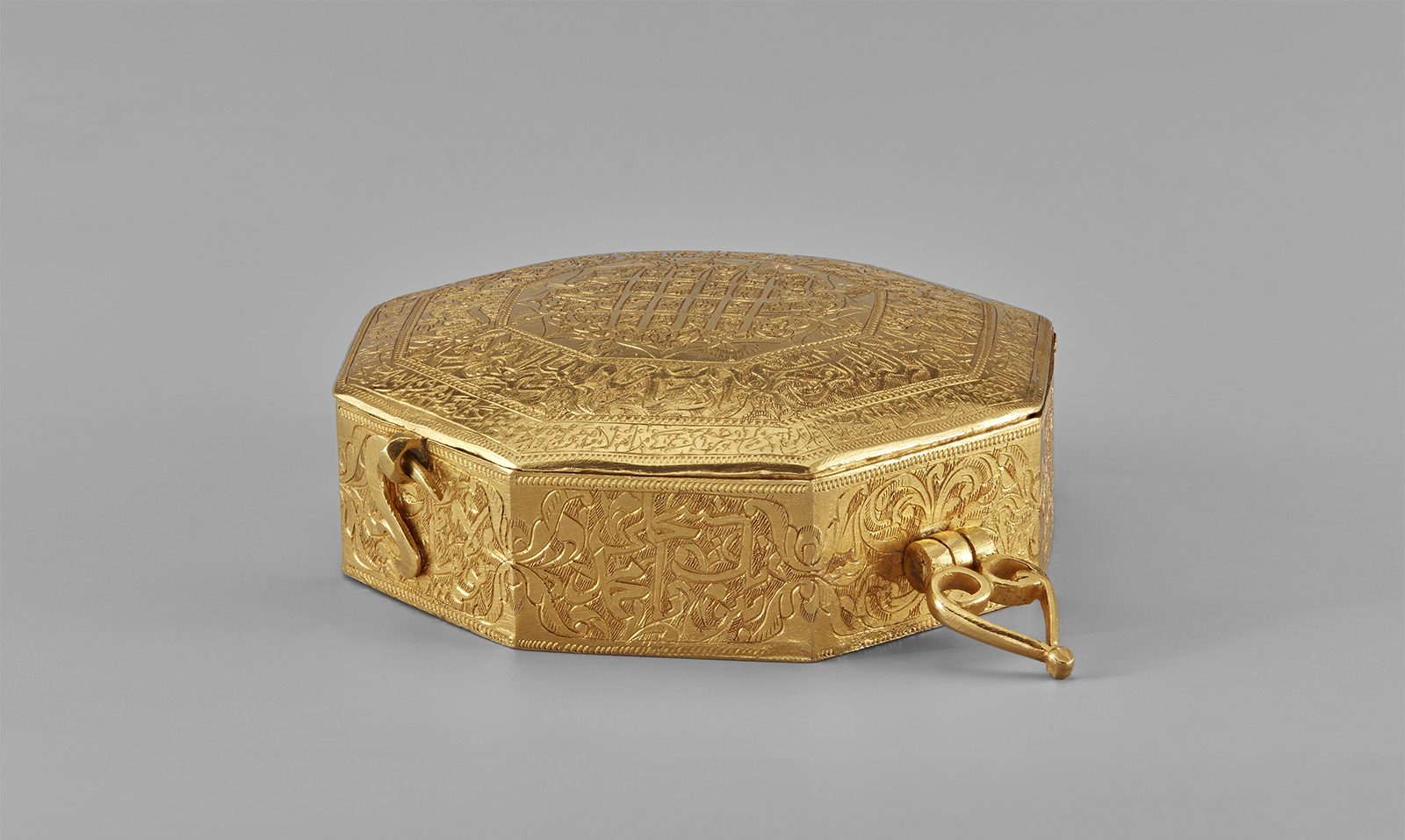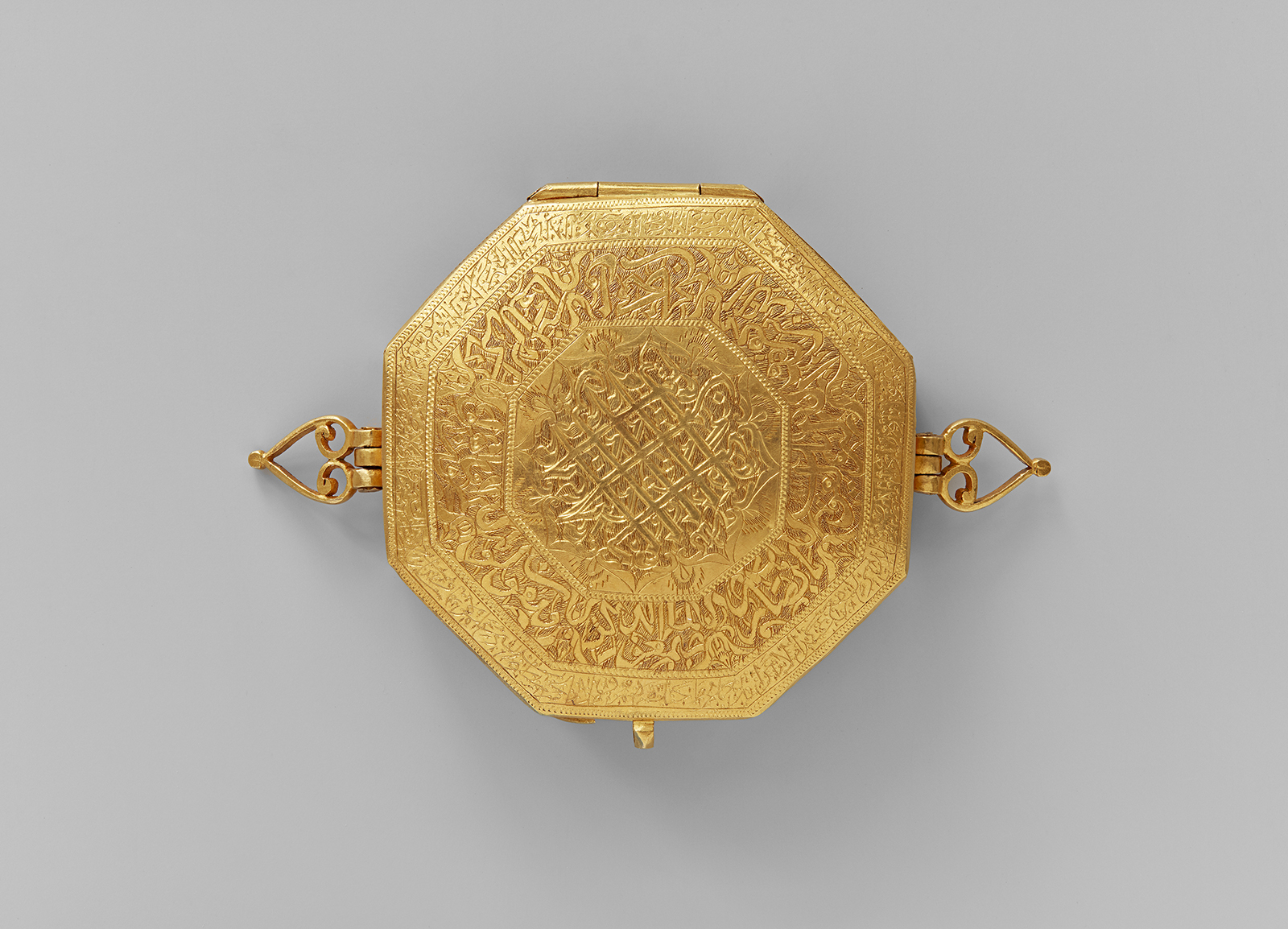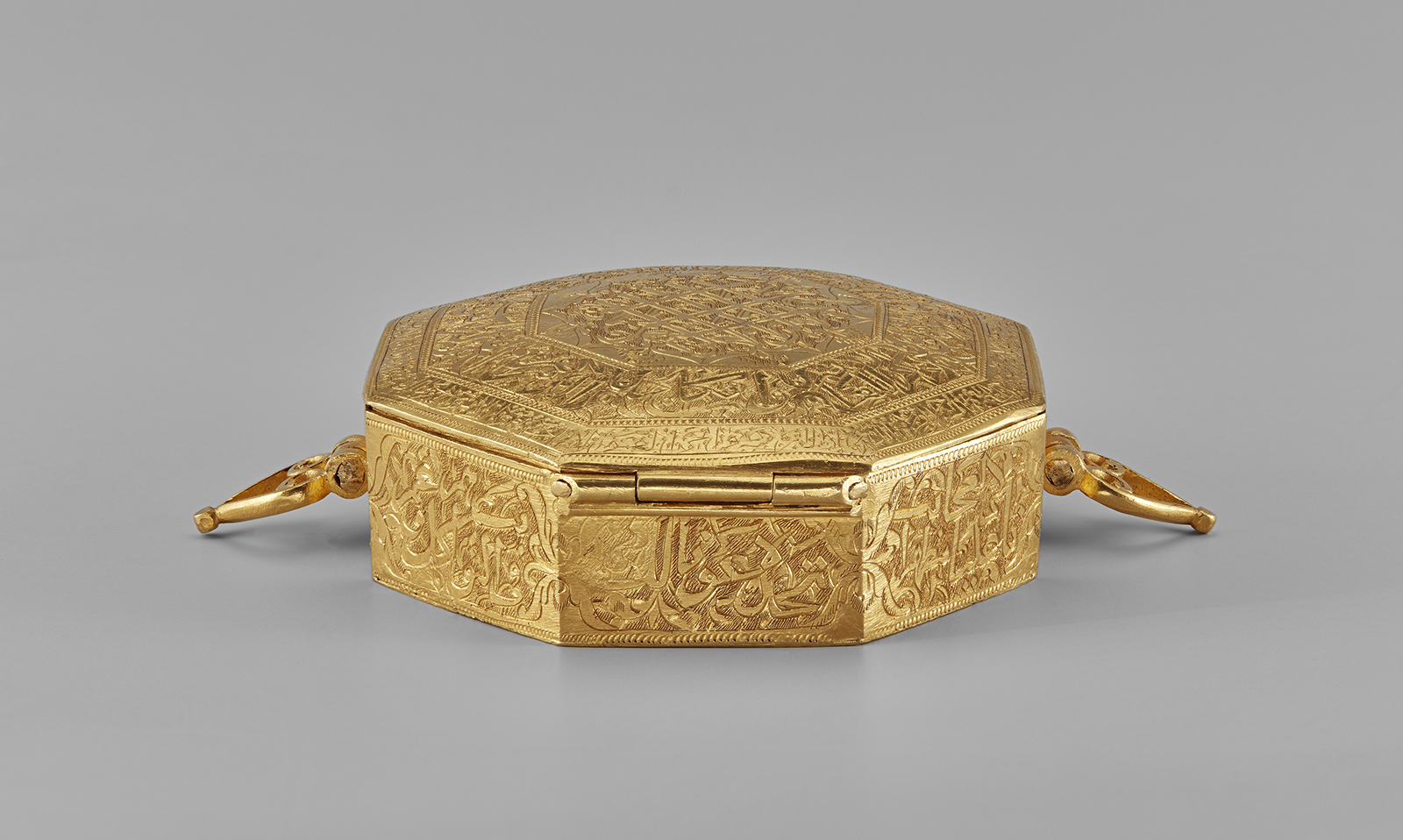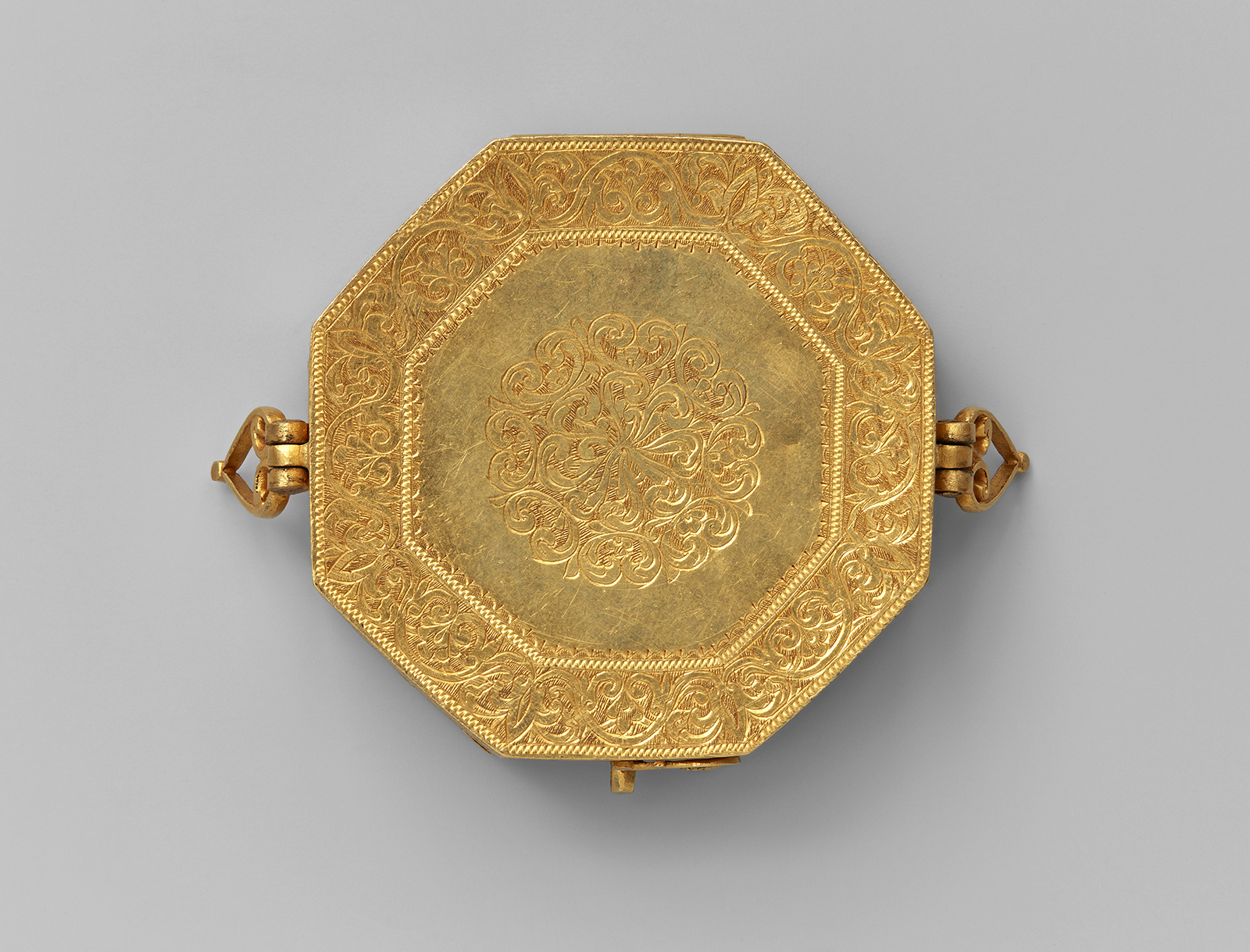Click on the image to zoom
Miniature gold Qur’an case
- Accession Number:AKM624.1
- Place:Iran
- Dimensions:Diameter: 5.3 cm
- Date:19th century
- Materials and Technique:
Known as a bazuband, this type of Qur’an case was worn as an arm ornament. The palmette-shaped loops on either side of the box indicate how it originally would have been tied with a silk string around the bicep of a pious and wealthy member of Qajar society. Miniature Qur’an cases such as this were portable talismans; the words of God, expressed through holy verses covering the object as well as the sacred texts that would have been held inside, served as fortification from malice, ill fortune, sickness, and enemies. The Qur’anic verses inscribed on the exterior of the box [1] include verses from Surat al-Baqarah (The Cow) and Surat al-Qalam. The bismillah (“In the name of God, the merciful, the most compassionate”) is rendered in the very centre of the top amid scrolling arabesques. Its grid-like appearance is remarkably similar to an inscription on a miniature Qur’an in the Ashmolean Museum (EA2012.95).[2]
See AKM624.2
Further Reading
While such miniature Qur’an cases are known from at least the Fatimid period (909–1171),[3] this example dates to the 19th century, and was created in Iran under the Qajar dynasty (1779–1924), which produced works of art that were both traditional and modern. Spanning nearly a century and a half, the Qajar Dynasty bridged the gap between the largely tribal society of the 18th century and a modern centralized rule in Tehran. The formation of the dynasty in 1779 brought an end to a long period of political instability that had gripped the region since the fall of the Safavid Empire in 1722. Art produced during the Qajar period is heavily influenced by Europe, as can especially be seen in portrait painting from the era (see AKM276). However, many Qajar artists continued to work in traditional and revivalist styles. The Qur’an case embraces both influences: a talismanic tradition expressed in Islamic art for hundreds of years, and a European detail in the form of an incised rosette motif on the case’s underside.
Most known examples of Qajar-era bazuband Qur’ans were made from silver, including a very similar box in the Lily Library, Indiana University Collections.[4] The present object, worked in gold, is a unique example of the riches of the elite members of the Qajar dynasty. These important gold cases and their now-lost contents served to invoke the power of God to protect and preserve the wearer, and today reveal the tastes of 19th-century Iran.
— Courtney Stewart
Notes
[1] Chapter 2, verse 255 and Chapter 68, verse 51, and an Arabic quatrain.
[2] See http://jameelcentre.ashmolean.org/collection/6980/9992/0/12716. A near-identical box to the Ashmolean is in the Khalili Collection (JLY 123) and is published in Art of Adornment Vol. II, and was presumably originally a pair with the Ashmolean box.
[3] See AKM599. Very small Qur’ans were also known from the Safavid period (1501–1722) in Iran, and referred to as sancak, when they were attached to military standards, and processed. A good example is 17th-century octagonal Persian Qur’an box in the Morgan Library (MS W.22) https://www.themorgan.org/collection/treasures-of-islamic-manuscript-painting/6.
[4] See the Lilly Library, Adomeit Miniature Islamic Manuscripts C9, for a similar design: http://www.iub.edu/~iuam/online_modules/islamic_book_arts/exhibit/miniature_manuscripts_and_scrolls/select_qur%27anic_chapters(2).html.
References
Aga Khan Trust for Culture, Spirit & Life: Masterpieces of Islamic Art from the Aga Khan Museum Collection. London: Aga Khan Trust for Culture, 2007. ISBN: 9783894796037
Bromer, Anne and Julian I. Edison. Miniature Books: 4,000 Years of Tiny Treasures. New York: Abrams in association with the Grolier Club, 2007. ISBN: 9780810992993
Diba, Layla S., ed. Royal Persian Paintings: The Qajar Epoch, 1785–1925. Exhibition catalogue. Brooklyn: Brooklyn Museum of Art, 1998. ISBN: 9781860642555
Gandy, Christopher “Inscribed Silver Amulet Boxes.” In Allan, James W. Islamic Art in the Ashmolean Museum. Oxford: Oxford University Press for the Board of Faculty of Oriental Studies, University of Oxford, 1995, 155–66. ISBN: 9780197280195
“Qur’an cases for armbands.” In The Art of Adornment; Jewellery of the Islamic Lands. Part II. London: Nour Foundation, 2000, 635. ISBN: 9780197276006
Note: This online resource is reviewed and updated on an ongoing basis. We are committed to improving this information and will revise and update knowledge about this object as it becomes available.










